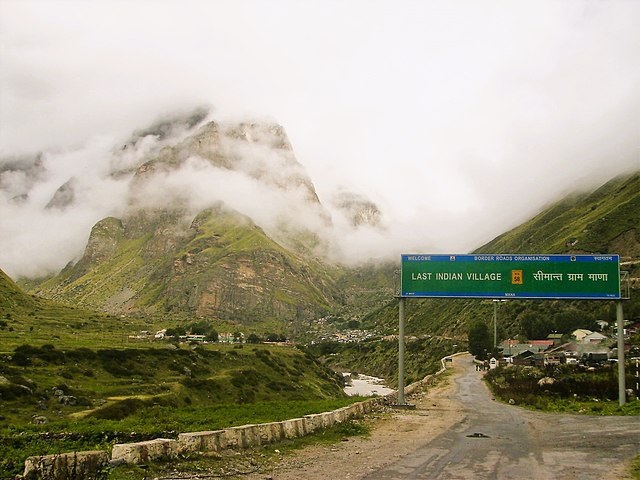If you ever happen to visit Badrinath, do travel a bit further and visit Mana, the last village of India in the Indo-China border. Mana village is just 3 kms to the north of Badrinath and a decent road leads you to the village. Mana is a small hamlet and it will only take only a few hours for you to explore the place.Once you are there, you realize that the place is worth the time.
People often get mixed up between Mana village in Uttarakhand and Chitkul in Himachal Pradesh when it comes to defining which is the “last Indian village.” To clarify, Chitkul is the last inhabited village on the Indo-China border, but Mana in Uttarakhand is officially recognised as “Last Village of India.”
Mana village is located in Uttarakhand’s Chamoli district, at an elevation of 3118 m, on the banks of the Saraswati river, about 3 kms from the famous Hindu holy shrine Badrinath. This delightful hamlet is situated 24 kms from the Indo-China border, making it India’s last village. If you explore the place, you’ll notice shopkeepers selling their products under the title ‘last village,’ such as ‘India’s Last Tea and Coffee Corner,’ that is both interesting and amusing.
Mana welcomes all types of visitors. The village is a popular destination for leisure travelers, adventure seekers, history and mythology enthusiasts, as well as spiritual and religious beings, due to its stark beauty, picturesque trekking trails, ancient temples, and mysterious caves.
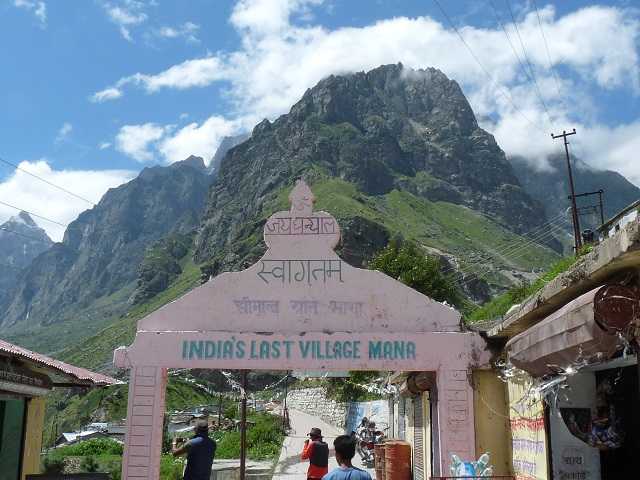
Kp.vasant, Wikimedian Common
Post Contents
Reaching Mana village
Mana is easily accessible from Badrinath and Joshimath, both of which are well-connected to the rest of Uttarakhand. Travelers typically arrive in and hire taxis in Haridwar or Rishikesh, which are well connected to major cities such as Delhi and Dehradun. Mana is 3 kms from Badrinath and 48 kms from Joshimath. The nearest railway station is in Haridwar, which is 275 kms away. Mana is 319 kms from the nearest airport in Jolly Grant, Dehradun.
NH-58 leads you to the village which is the end point of the highway. You can hire a taxi from Badrinath or if you have time, you can just walk into the last Indian village. The journey from Badrinath to Mana is a visual treat as it is blessed with some of the best scenic landscapes and mountain views that you can’t afford to miss. You can notice a welcome gate “The Last Indian Village” just outside the village. From here one road goes to the village and the other one towards the right leads you to Mana Pass.
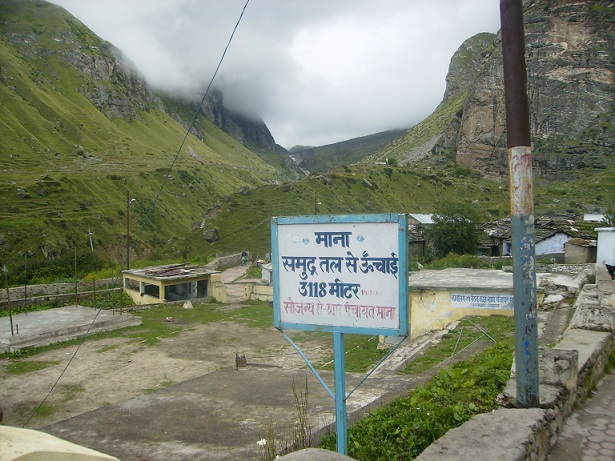
Also Read: All You Need To Know About Badrinath Dham
Exploring Mana village
Mana bears traces of Hindu mythology, the Mahabharata. It is believed that the Pandavas had to pass through this village on their way to heaven. Bheem, the strongest of the five brothers, had moved a huge rock to bridge the Saraswati river.The village also dots some caves which have historical as well as mythological significance, a couple of which named after Veda Vyasa and Lord Ganesha makes for a mandatory visit.
There is more to Mana village than the Mahabharata trail. The place, the people and the life here is as interesting as the mythology associated with the village. In this post I will not only discuss the mythical past of Mana village, but also several other aspects like the people and their life.
Let’s explore
The stories of Mahabharata might sound less like a tale concerning divinity and more like a gossip about a next door neighbour. However, the people of Mana are quite used to the fact that gods indeed were, at sometime in the past, their neighbours in this Dev Bhoomi. They once inhabited this place just like they do now. So when travellers come to this village where figures of famous myths once lived and walked, they perceive everything differently. Let me first introduce you to some of the places of interest which tell the tales from Mahabhar.
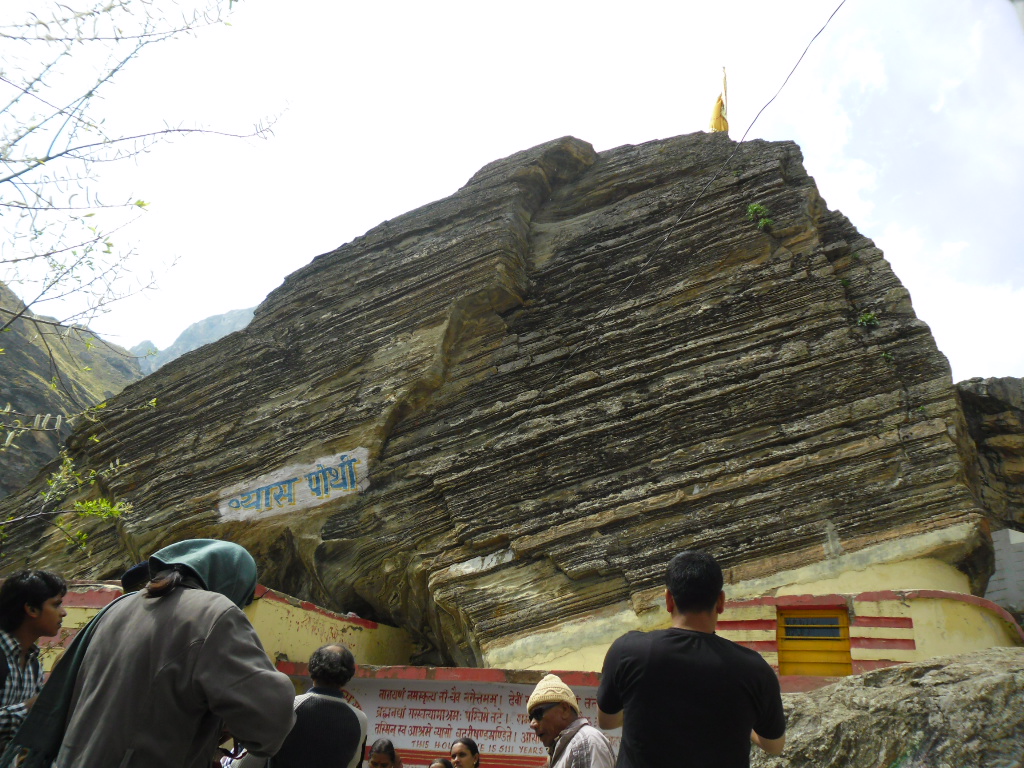
Vyas Gufa: Where vedas rearranged and Mahabharata dictated by Veda Vyas
After walking some 200 meters you reach a point where the village road bifurcates. The left one goes to Bhim Pul and Saraswati river while the right one leads you to Vyas Gufa and Ganesh Gufa. This is the very place where Veda Vyas rearranged the Vedas into four parts and authored Bhagvad Gita.
It is believed that from this cave he dictated Mahabharata to Ganesha who was the assigned scribe to write Mahabharata. The roof of the cave looks noticeably flaky and does appear like a bundle of palm leaf manuscript. The rock is worshiped as ‘Vyas Pothi’ or ‘Vyas’ Book’ which is believed to have turned into a rock over the years.
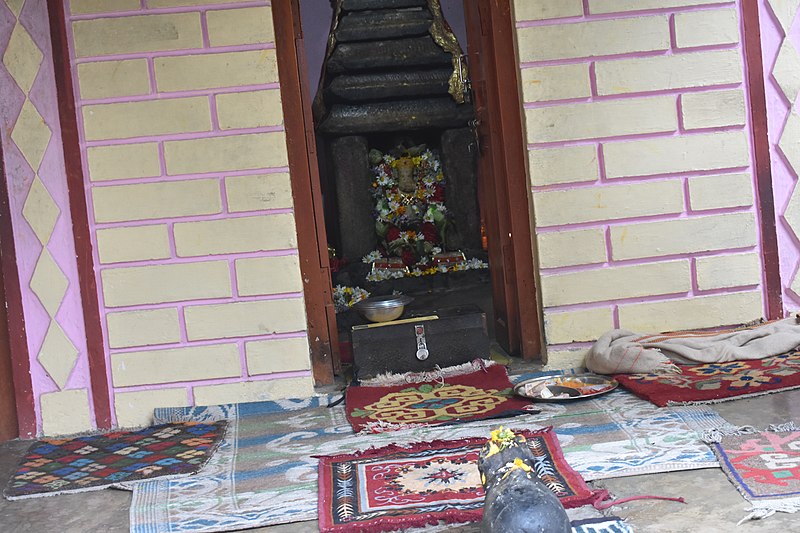
Related Post: How to plan your Badrinath Trip-A complete guide
Ganesh Gufa: The venue where Mahabharata was written by Lord Ganesha
Situated quite close to the Vyas Gufa, you can notice a naturally formed cave called Ganesh Gufa. This is the cave where the epic Mahabharata is said to have been written by Lord Ganesha after being transcribed by Maharishi Vyas. Nature enthusiasts and photographers are drawn to the cave and the captivating meadows that surround it.
Saraswati river: The mystic hidden river
Saraswati is the mysterious river that has caught the imagination of the people across the globe since ages. And when you are on a visit to Mana village, the river is a must-visit. Though a very small river of barely a few hundred meters of length, Saraswati is quite a noisy river. The river falls on your trek to Vasudhara falls as you are welcomed by its roar quite from a distance.
Mythology has it that sage Veda Vyasa was disturbed by the noise of Saraswati while he was narrating Mahabharata to Lord Ganesha. He asked the Saraswati river to stay calm. But Saraswati river didn’t pay any heed to the request of sage Vyasa. An angry Veda Vyasa cursed that Saraswati river be never seen again. It is believed that the river went underground and became invisible. Geographically however you can see that Saraswati merges with Alkananda river after a journey of only 200 meters from its origin just outside Mana village at a place called Keshava Prayag.
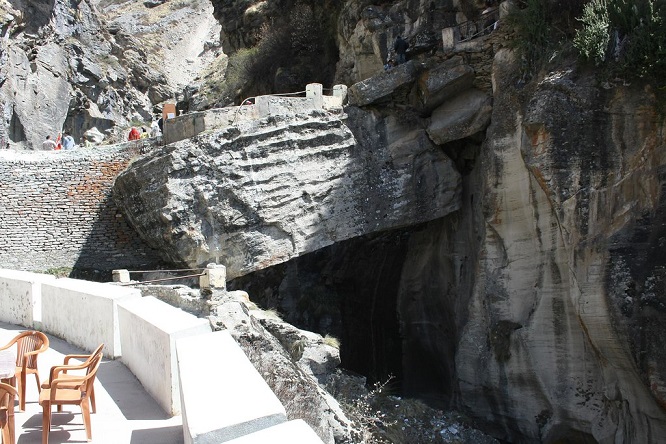
Do Read: A complete guide to a weekend road-trip to Srisailam
Bhim Pul: The rock bridge over Saraswati river
Bhim Pul is one of the many interesting historic sites in Mana and has a tale to tell as well. The Bhim Pul is situated where the Saraswati river merges with the Alaknanda river at a great speed. According to legend, the Pandavas of the Mahabharata epic crossed the Saraswati river at this very location close to the Badrinath Temple during their final ascent to heaven, known as swargarohan.
Bhim took a huge boulder and strategically put it over the river’s current so that it might be used as a bridge when their wife, Draupadi, was unable to cross. This rock, which is today called the Bhim Pul that you can find in Mana village close to Badrinath.
Vasudhara Falls: For a short trekking experience
Vasudhara Falls is a popular tourist attraction near Mana, located 9 kms from Badrinath and 6 km from Mana Village. This is a popular location for short treks close to Badrinath.
Beautiful mountain peaks line the landscape around Vasudhara Falls. At a height of 12,000 feet, the water of these falls cascades down from a height of 400 feet. The falls are reputed to be haunted. There is a legend around this waterfall, according to which sinners should stay away from Vasudhara Falls. The water of the fall looks like milk streaming down the mountain from a distance.
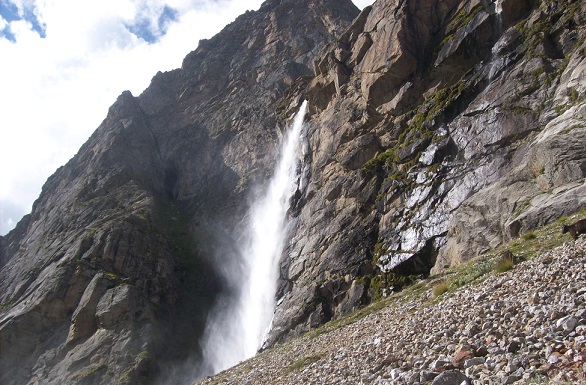
With lush greenery and beautiful mountains all around, the fall looks stunning during monsoon and post-monsoon season. This waterfall is best visited between March and June. Mana is only accessible when the Badrinath season begins in April/May, so the best time to visit is between May and June.
Visitors must trek 6 kilometres from Mana village to reach the falls. The one-way trek from Mana to Vasudhara takes about two hours. The first 2-3 kilometres are relatively easy to walk. The trek becomes difficult after passing the Saraswati temple as the trail becomes very steep. The views of the Vasudhara river valley from this trek are spectacular. A bath under falling water is both refreshing and exciting.
Mythology has it that the Pandavas took this very route during their Swargarohana Yatra and Sahadeva, the youngest of the pandavas breathed his last here.
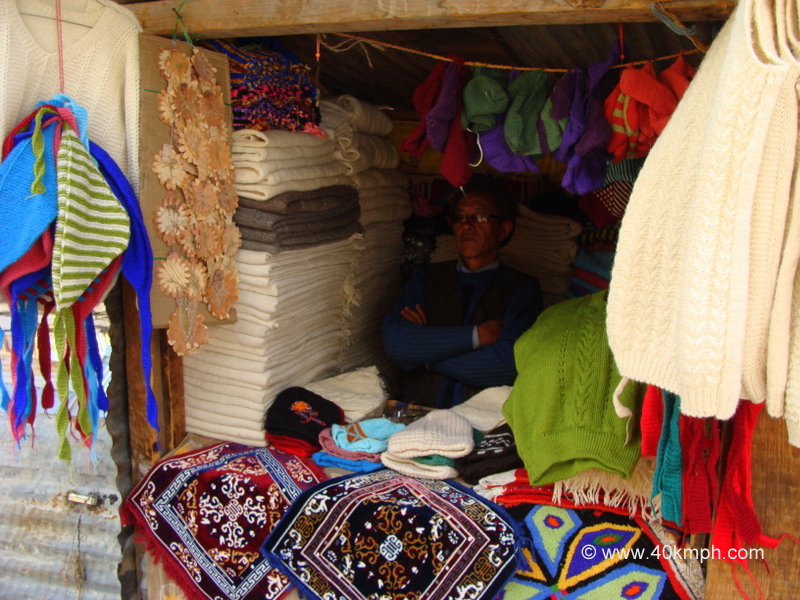
Must Read: Visiting Taratarini Temple, the Adi Shakti Peetha in Odisha
People of Mana Village
The inhabitants of Mana village trace their origin back to Mongol tribes and live a nomadic lifestyle. The residents are the last generation of the Bhotia community. During the months of October to May, the weather becomes so hostile and inhospitable that residents relocate to lower areas of Chamoli, which is some 100 kilometres from Badrinath.
The Dwellings of Mana Villagers
On entering the village you can notice that the Mana villagers live in stone cottages with mud plastered walls and slate tiled sloping roofs. The houses are built into the hillside, and the backyard features a kitchen garden. They make a living by growing spinach, cauliflower, and potatoes and selling them to hotels and guest houses in Badrinath.
The Mana women are master craftswomen. Their handcrafted shawls and carpets are in high demand. Woolen items such as Pattu, sweater, cap, muffler, scarf, carpet, Ashan, and Pakhi are commonly woven. While walking down the narrow lane of the village you can see them at work knitting and selling their products.
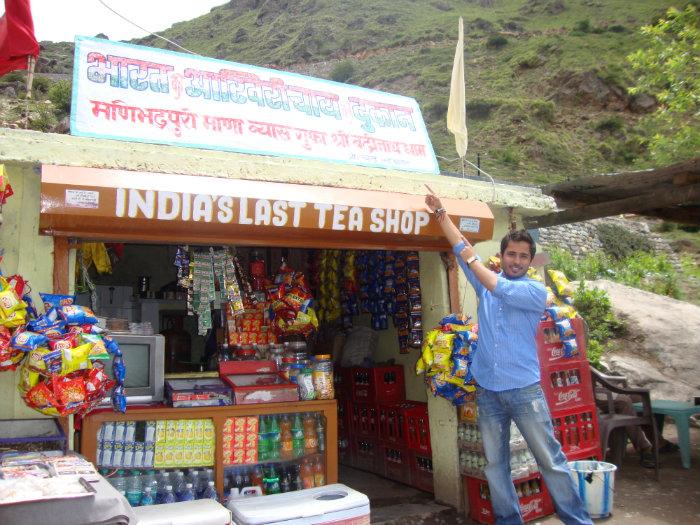
The Last Tea Shop of India
Yes, you heard it right. Hidden in the god’s own state Uttarakhand, India’s last tea stall is surrounded in the middle of beautiful Himalayan hills at an elevation of around 3118 meters.
The journey in search of this hidden shop takes you to the Mana Village which is popularly known as The last Indian village just 3 km away from the holy town Badrinath. This iconic last tea shop is located adjacent to Vyas Gufa.
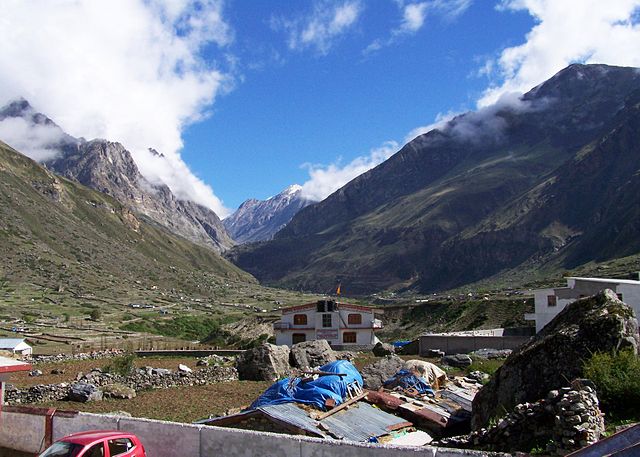
Also Read: Bhojeshwar temple: The unfinished masterpiece of Bhopal
When to visit Mana village
The peak season for visiting Badrinath and Mana Village is May-June, though it is still open until early November. Monsoon season is from July to September, and it is possible to visit during this time because the area receives less rainfall. However, roads on the way to Joshimath or Badrinath may be bad or have landslides during the monsoon. From November to April, Mana is inaccessible due to heavy snowfall.
Where to stay in Mana village
I didn’t find any hotel during my trip to Mana, but homestaying is an option. It is preferable to drive down to Badrinath, which is only 3 kilometres away.
At Badrinath, there are numerous hole-in-the-wall and charity-run accommodations. Rooms will be very basic, with or without hot water. There will be plenty of options for hotels and homestays as well.
Conclusion
A visit to Mana Village may appear to be an extension of a visit to Badrinath, but it is a must-see for both tourists and trekkers. Apart from the mythological trail that you must follow, there are also several treks of varying difficulty levels along this route, including Vasudhara Falls Trek, Satopanth Lake Trek, Swargarohini Trek (gateway to heaven), and glaciers. A high altitude Himalayan experience can be planned based on the number of days available.

